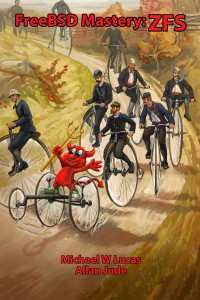For the last couple years I’ve been fairly successful selling my self-published books from my own store at tiltedwindmillpress.com. Recent legislation in the European Union changes this.
The EU has this thing called VAT, or “value-added tax.” It’s a tax that requires all sorts of paperwork. It requires charging tax based on the buyer’s location. And it applies to ebooks as of 2015.
Legally, if I’m doing business in the EU, I’ll need to collect VAT and remit it to each country in the European Union.
I don’t make enough on EU sales to cover the paperwork and time.
I have little choice but to stop doing direct business in the EU.
I want readers in the EU to be able to buy my books, but I won’t be able to sell to them directly. I’ll need to go through retailers that handle VAT for me.
I have the following requirements for a retailer.
- Must let me sell multiple formats (pdf, epub, mobi) in a single purchase.
- Must handle VAT
- Must support DRM-free
- Must not hold onto payments for “very long” (whatever that means)
- Must handle highly formatted documents
- Must add VAT to the retail price
Many people have suggested Smashwords, but they fail #4 and #5. Smashwords pays quarterly. They also only accept epub and Microsoft Word files, and they produce PDF, Kindle, RTF, and all the other formats from those. I want buyers to get a PDF that matches the print edition, so that they get interesting things like indexes. Also, Smashwords does not support tables. (I don’t blame them. Tables are evil.)
So far, it looks like Gumroad is the winner. Gumroad will let me sell any file format I want, exactly as I upload it. They will handle VAT for me, by adding the VAT to the price. And they pay every other week, by direct deposit. Annoyingly, you must have a Gumroad account to browse the catalog. I have Tarsnap Mastery on Gumroad now. Other titles will follow.
As far as other retailers go: retailers like Amazon and iBooks are handling VAT by making ebook prices inclusive of VAT. This means I’ll need to raise my EU prices to compensate.
Once I have everything in place, I’ll implement an IP-based block against sales to EU countries.
I really, really dislike this, but EU law leaves me no choice. I’m not comfortable blatantly ignoring tax law. I don’t think the EU could really do anything to me, but I wouldn’t be shocked if a future EU-US treaty were to suddenly make me responsible for years of back VAT. And I would like the option of visiting the EU in the future, rather than risk trouble because I’m evading taxes.
Of all the book buyers in the world, my readers are the most likely to be able to evade IP-based blocks. I’ve written one of many books on how to do that. An IP-based block is reasonable due diligence on my part, and I can stand up in court and say that. If you choose to evade that block, that’s an action on your part and, legally, not my responsibility. I have no other technological means to block you, anyway.
“But you’re small!” Yes, I am. But I don’t intend to stay small. I’m working very hard at getting bigger.
If you’re in the EU, and you’ve been waiting to buy some of my Mastery books, I suggest you stop waiting now.
If you’re in the EU and want to buy books directly from me, I suggest fixing your tax laws so that doing business there is worthwhile.
Rest assured, I really dislike taking these steps. Spend some time reading about microbusinesses and the EU VAT. Many people like me who happen to be based in the EU are being completely forced out of business. If I lived in the EU, I’d probably have to leave.
I’m also pondering some sort of sponsorship plan, where people could send me money to support my work. Every so often, I’d send them an ebook as thanks. This wouldn’t be a sale–sponsorships would be a little more expensive than just buying a book, otherwise it would be a thinly disguised sale and breach the law. I’m still debating this, though, as I’m not sure there’s enough interest.
(UPDATE 12:30 PM)
I should say, I have no objection to paying taxes. Taxes are the price we pay for civilization, and while you might argue that there’s better ways to do it, taxes are how we do it today.
I don’t even object to paying a European tax on European customers. I’d just pass it through to my customers, after all.
But to comply with US taxes, I keep spreadsheets of sales and expenses. At the end of the year, I bundle them up with a few 1099s and related docs and ship them to my accountant. She sends me a nice letter saying “write these checks and mail these forms.”
If I could do this and comply with the EU VAT, I would do so.
But I can’t. VAT compliance requirements are a nightmare for a microbusiness. VAT compliance requires multiple sources of information from multiple providers. I don’t even take credit cards, because the compliance requirements are too high. There’s zero chance I’m going to be capable of VAT compliance!

